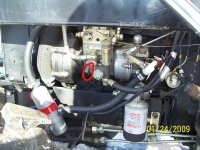K5lwq
Elite Member
- Joined
- Aug 6, 2017
- Messages
- 4,918
- Location
- Mineola, TX
- Tractor
- Kioti LK2554, Branson 4815C, Satoh Beaver, Speedex
If the diesel mechanic is willing to work on it, absolutely he should be able to figure it out.Thanks Ed, I just changed the last of the four fuel lines (not from tank to sediment bowl because I cannot get to it) and no go. Same thing every time. I’ve burned thru 4 gallons of diesel doing these tests and am now at the end of the road. However, tomorrow I will flush radiator and add new coolant/water 50/50 mix to see what happens. That will be Sunday. If that doesn’t work I’m going to pay the dealer fee to come get it and fix it then return it. The way I’m going replacing things I will have a new tractor in a few months!
Btw, has anyone ever had a regular old diesel mechanic (e.g., works on trucks) diagnose and fix their tractor?? I mean, I have an auto repair shop 2 miles away and they can get OEM parts as easily as I. Or are tractor diesels the sole domain of tractor repair (dealers) places? Just curious.
I would have tried to run it on a 5 gal can of fresh diesel as was suggested earlier. If it will run on that then you know you have a tank issue. Another thing I have done is add a cheap inline fuel pump to feed the filter. Do you have pictures of the injector pump? Sometimes there is a lift pump mounted on or close by.


